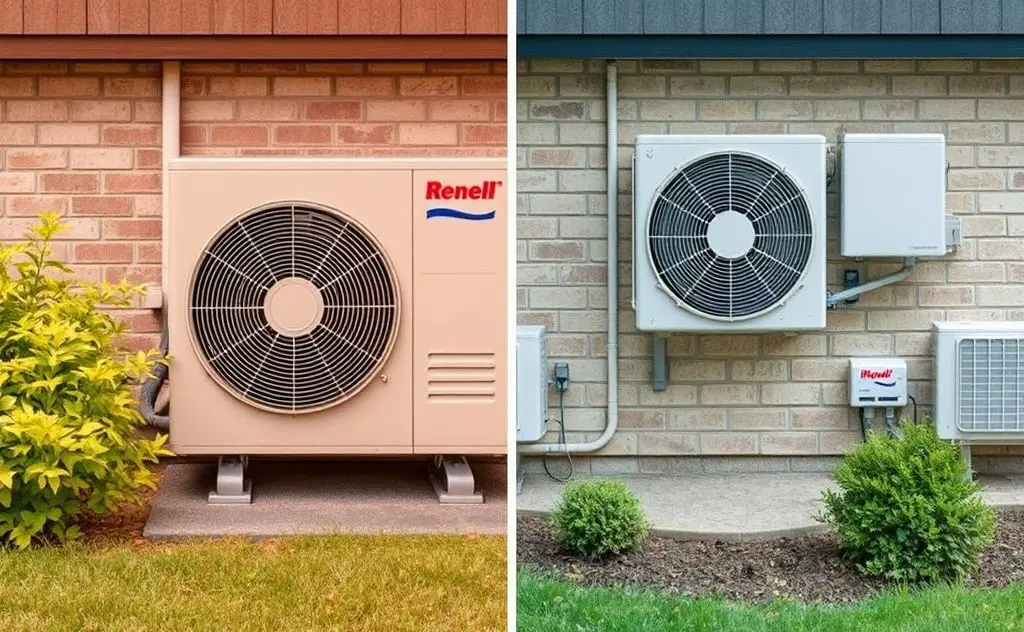HVAC (Heating, Ventilation, and Air Conditioning) refers to a complete climate control system, while central air specifically refers to centralized cooling systems.
When it comes to home climate control, many homeowners confuse HVAC systems with central air conditioning. While both manage indoor temperatures, they serve different purposes and have distinct components. Understanding these differences helps you make informed decisions about installation, maintenance, and repairs.

What Is an HVAC System?
HVAC stands for Heating, Ventilation, and Air Conditioning. These complete systems handle all aspects of indoor climate control:
- Heating: Furnaces, boilers, or heat pumps
- Cooling: Central air conditioners or heat pumps
- Ventilation: Ductwork and air circulation components
HVAC systems provide year-round comfort by managing both heating and cooling through integrated components. Many modern systems also include air filtration and humidity control. For homes needing comprehensive climate solutions, built-in gas heaters often form part of HVAC setups.
HVAC System Components
- Furnace or heat pump for heating
- Air conditioner or heat pump for cooling
- Ductwork for air distribution
- Thermostat for system control
- Air filters and purifiers
- Ventilation equipment

What Is Central Air Conditioning?
Central air refers specifically to cooling systems that distribute cold air through ductwork. Unlike complete HVAC systems, central air only handles cooling functions. These systems consist of:
- Outdoor condenser unit
- Indoor evaporator coil
- Refrigerant lines
- Ductwork for air distribution
Central air systems often pair with separate heating systems like furnaces. According to Energy.gov, central AC accounts for about 6% of total electricity use in U.S. homes.
Central Air Components
- Compressor/condenser (outdoor unit)
- Evaporator coil (typically inside air handler)
- Refrigerant lines connecting units
- Ductwork for cooled air distribution
- Thermostat (may be shared with heating system)
Key Differences Between HVAC and Central Air
| Feature | HVAC System | Central Air |
|---|---|---|
| Function | Heating, cooling, and ventilation | Cooling only |
| Components | Furnace, AC, heat pump, ducts, vents | Condenser, evaporator, ducts |
| Operation | Year-round climate control | Seasonal cooling |
| Installation | More complex, integrated system | Simpler if ducts exist |
| Cost | Higher initial investment | Lower than full HVAC |
Which System Is Right for Your Home?
Consider these factors when choosing between HVAC and central air:
Climate Considerations
In moderate climates, a central air system paired with a wall heater might suffice. For extreme temperatures, full HVAC systems provide better year-round comfort.
Home Size and Layout
Larger homes often benefit from complete HVAC systems, while smaller spaces might only need central air cooling. The ASHRAE provides guidelines for proper system sizing based on square footage.
Energy Efficiency
Modern HVAC systems with heat pumps often offer superior energy efficiency compared to separate heating and cooling systems. Look for ENERGY STAR rated equipment for maximum savings.
Maintenance Requirements
Both systems require regular maintenance, but HVAC systems need more comprehensive care:
HVAC Maintenance
- Annual furnace inspection
- Annual AC tune-up
- Duct cleaning every 3-5 years
- Monthly filter changes
Central Air Maintenance
- Annual professional tune-up
- Monthly filter changes during cooling season
- Outdoor unit cleaning
Cost Comparison
System costs vary based on home size and equipment quality:
- Central air installation: $3,000-$7,000
- HVAC system installation: $5,000-$12,000+
- Operating costs: HVAC typically higher due to year-round use

